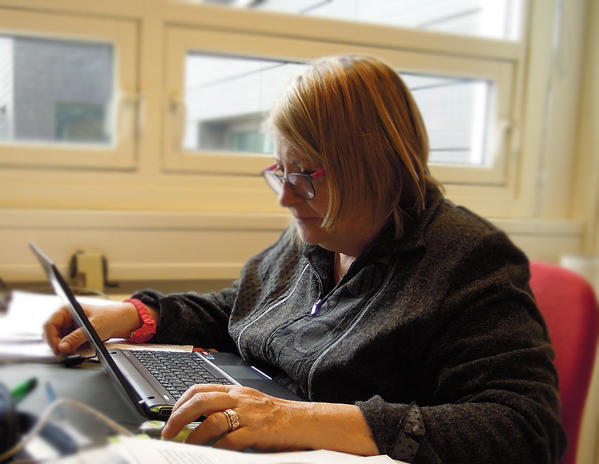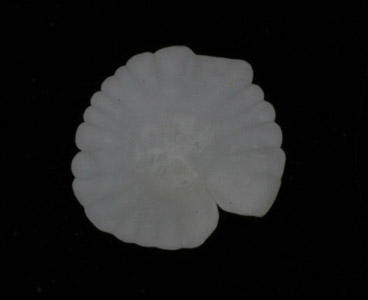Honoured guest
The Director of the Mediterranean Institute for Advanced Studies is visiting BIO!
Main content
At home at her research institute on the island of Mallorca in the Mediterranean, Beatriz Morales-Nin is Director. Here at BIO, she is prioritising collaborative work with colleagues from the Fisheries Ecology and Aquaculture research group, in particular with Audrey Geffen and Arild Folkvord, with whom she has collaborated on different projects since the 1990’s. She has visited Norway at least 10 times; mostly to Bergen, but also to Trondheim and Oslo. This year will be her first 17th of May! Morales-Nin has also been a referee for many of the funding proposals that BIO has submitted to international funding agencies! Knowing more about BIO from her own “hands-on” experiences can be invaluable for that kind of activity.
A Fish Biology researcher, Morales-Nin, has collaborated Geffen and Folkvord in a number of joint EU proposals. Based on their basic research work with otoliths, they have been able to generate important information about, for example, fish aging and life history, which has had significant impact on fishery activity.
Morales-Nin says that it has been interesting collaborating with people who work with “cold-water” fish, because fish living in colder waters have different life strategies than those living in warmer waters. For example, she cited hake, a fish that is somewhat related to cod and haddock. Research on hake otoliths has shown that hake have less of a seasonal growth signal, and in particular, that hake may spawn year-round (there are two slight peaks over the course of the year). This kind of information is important for fisheries – and for fishery regulation.
Morales-Nin reflected on the current controversy in fisheries over using only “size” as a factor to limit catches and set quotas. She says it may be that we need to protect the largest and potentially “fittest” individuals in a population as well as the small and young!
While in Bergen, Morales-Nin hopes that they will put the finishing touches on 2 manuscripts. They also hope to work on a NORDFORSK proposal, HARDROCK, that aims to build a kind of otolith database. Since the later 1800s researchers have recognised that otoliths provide a wealth of ecological information about fish. Large collections of otoliths exist in many research institutions and museums around Europe. Making the “hard” copies of this information (the collections) available and accessible in a “soft” way (database), would provide researchers with invaluable time series data that will provide significant information for researchers, for example modelling trends for fisheries and even for topics such as climate change.
Morales-Nin is also involved in a collaboration with the Institute of Marine Research where she is part of an ICES working group looking into Recreational Fisheries. She explains that this fishery has enormous significance for Norway, because recreational fishermen here use equipment that in the Mediterranean would have been classified as commercial. The working group is addressing important questions such as: how to regulate this fishery? How to measure the catch? How to assess the impact of this fishery?
Mediterranean Institute for Advanced Studies (IMEDEA) was first established in 1985. As with most research institutes it underwent several transformations and re-organisations before attaining its current structure in 1995. IMEDEA is a research centre jointly governed by the Consejo Superior de Investigaciones Científicas (CSIC) and the University of the Balearic Islands (UIB). Morales-Nin explains that there are about 150 employees at IMEDEA, of whom about 31 are permanent. The institute does not do assessment, such as IMR does in Norway, it only undertakes research projects, which means that Morales-Nin’s job as Director involves the continual challenge of finding funding.
Morales-Nin is a firm believer in the importance of knowledge transfer. She believes that research institutes should play advisory roles, providing innovation transfer of multi-disciplinary expert-based information to governments, stake-holders and the general public. It is a honour for BIO to have her visiting us here in Bergen.
Links
Mediterranean Institute for Advanced Studies (IMEDEA)
Consejo Superior de Investigaciones Científicas (CSIC)
University of the Balearic Islands (UIB)
Related story
Snowbird Cod: Not only Norwegians go to Mallorca!
Fact box: otoliths
Made up of calcium carbonate, otoliths function as an internal sense organ in vertebrates, which is involved in providing information about horizontal movement and vertical acceleration (in humans it is part of the inner ear). Fish otoliths have been studied since the late 1800s. They are interesting because they are a part of the fish skeleton that is preserved after death, and thus have been part of palaeontology studies. They are also interesting for ecological studies, including climate change.
The calcium carbonate that composes otoliths is primarily derived from water. As the fish grows, the otolith also grows by adding new crystals of calcium carbonate. The new growth forms layers, similar to the rings of a tree trunk. These rings can be “counted” to tally growth periods. However, during the constant crystalisation / growth cycle, trace elements and other compounds can be incorporated into the matrix. Thus analysing the chemical composition in isotope studies enables researchers to infer information about a number of important ecological conditions including the water bodies the fish has occupied, the growth conditions (temperature etc.), and diet.
Morales-Nin calls fish otoliths the “black-boxes” of fish!
Many researchers at BIO and UiB are investigating fish otoliths as part of their research. A search for “otolith” on the UiB web pages generated a long list!


